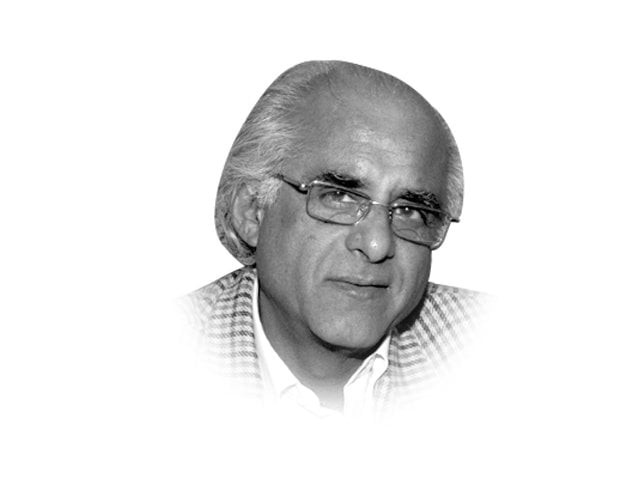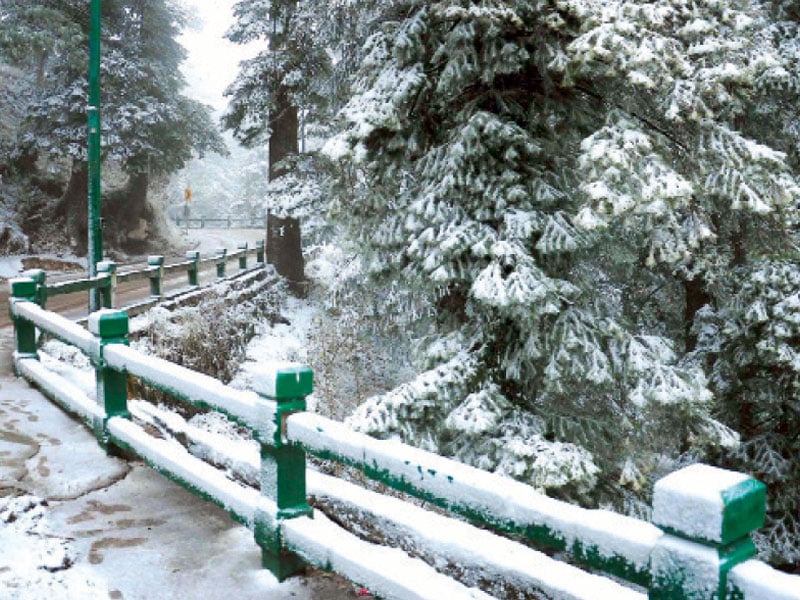He came by sea?
MbQ was instructed by Hujaj bin Yusuf to travel through Shiraz, Iran. Thus his route was south by east by way of Kech.

The writer is author, most recently, of The Apricot Road to Yarkand (Sang-e-Meel, 2011) and a member of the Royal Geographical Society
salman.rashid@tribune.com.pk
This sign sits near village Aghor in the lower reach of the Hingol River, about 10 kilometres (km) upstream of the river’s mouth. The ruinous tombs are crafted with slabs of worked sandstone in the same style as the Chaukundi tombs of Sindh — tombs that can also be found at several sites in adjacent parts of Balochistan.
I do not know who caused that sign to be put up but whoever he is, he clearly is a moronic ignoramus. He has no idea of history and is too full of himself to ask and be informed. For one, we know the genesis and evolution of the Chaukundi style funerary art and we know that it originated in Gujarat and blossomed to exquisite perfection in the hands of Sindhi craftsmen in the 16th century. We know that the Arabs were simply incapable of making such ornate burials in the early eighth century.
Secondly, and more importantly, MbQ did not come by the sea because the Chachnama, the history of the Arab conquest of Sindh, clearly spells out his route. Now, this book is the oldest extant history of the conquest of Sindh considered authentic as a record of those distant times.
The Coastal Highway, today a first-class artery for which we are beholden to the Frontier Works Organisation, follows an ancient alignment, but the Chachnama very clearly tells us that this was not the way MbQ came to Sindh. Since we are debunking fallacy, this road, as commonly believed, was also not taken by Alexander on his exit from his Indian Campaign.
As he set out of Iraq, MbQ was instructed by the governor, Hujaj bin Yusuf, to travel by way of Shiraz (Iran) in order to collect forces already stationed there. Thence his route was just south by east by way of Kech (Turbat), where Mohammad bin Haroon was the Arab overseer. Though the latter was unwell, he obeyed orders to accompany the invading army to Sindh. When they arrived at Armanbela (today’s Lasbela), his illness aggravated and the man died. His tomb is remembered today as that of Ari Pir and sits in what used to be a quiet place just outside town.
Now, this great east-west axis was a much-travelled road since prehistory. It was this way (and by another route that went through Gandava to Besima and Panjgur and into Kerman), that trading caravans from Mohenjo Daro plied en route to the cities of Mesopotamia. Alexander went through Lasbela to Turbat and then down to Pasni and Gwadar. Likewise, MbQ came east by this artery, but not through Gwadar. He made Turbat direct from Shiraz.
As he marched south from Armanbela to Debal, MbQ received further instructions from Hujaj: at his objective, he was to dig a protective trench to safeguard against surprise attacks. This would surely not have been an order had MbQ sailed to the battle of Debal and was anchored outside in the sea. The Chachnama explicitly tells us the order of march on the 230km journey from Armanbela to Debal, giving out the names of the leaders of the various divisions of the army.
The alignment followed by our Coastal Highway was a very hard way for the infrequent traffic that ever ventured on it. Beyond Sonmiani Bay, the route passed through a terrible desolation of waterless sand dunes until it reached the Hingol River 70km distant. Thereafter, though there are several streams draining the dry stony slopes of the Makran Coastal Range, water was hard to come by all the way to Gwadar.
Because the ignorant spread ‘knowledge’ in this country, the fallacy persists about the Arabs having come by sea or by the coastal route. However, this is not the only untruth we love to believe about the Arab invasion. We also believe that they just upped and came because some kidnapped woman screamed for them.
Published in The Express Tribune, January 12th, 2013.
















COMMENTS
Comments are moderated and generally will be posted if they are on-topic and not abusive.
For more information, please see our Comments FAQ